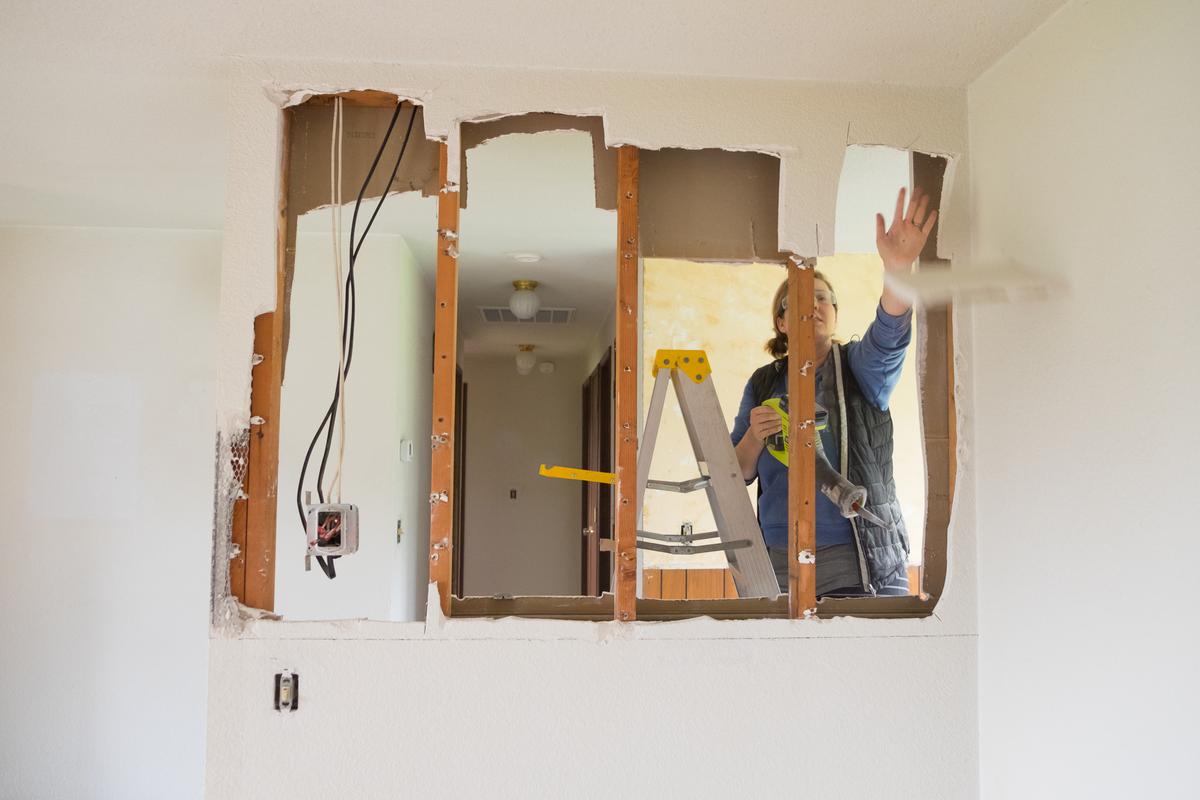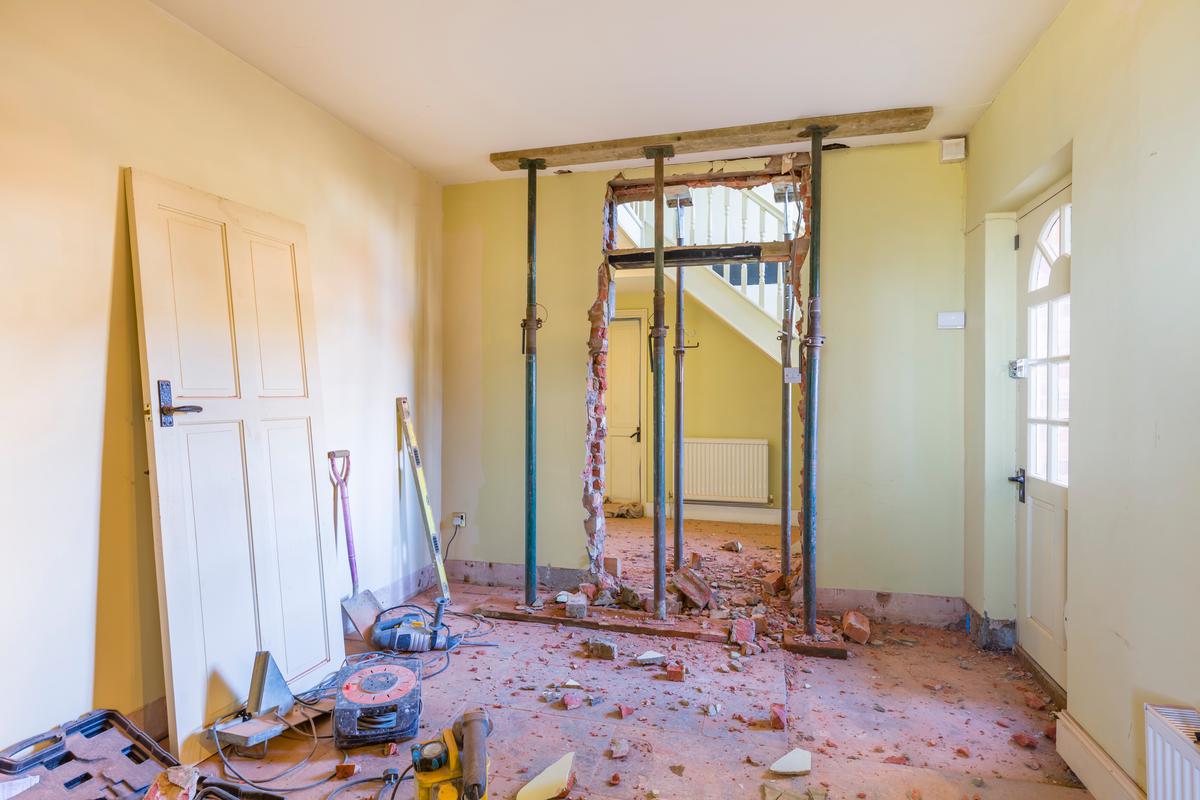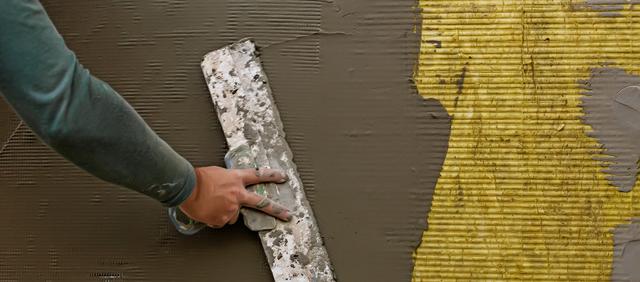Wondering why you might ever need to knock down a wall? Well, does adding an extension to your house or creating a pass-through between your galley kitchen and your dining room sound attractive? Perhaps you want to take out some ancient half wall you never much cared for. It could be that a temperamental load-bearing wall is the one thing that stands between you and your dream of an open concept floor plan. Whether you’re remodeling or renovating, knocking down a wall can create new opportunities in your home. However, it is a task that shouldn’t be taken lightly.

The Things You Can Do By Knocking Down a Wall In Your House
The aspiring DIYer can also take a crack at tearing down a wall. But if you plan to take down a wall on your own, there are few things you should know. Before you remove a wall, you should map out important things that could be lurking underneath the surface of your drywall. Both load-bearing and non-load-bearing are likely to contain electrical wiring running through them. They may also have water pipes running through them. Cost is another important factor to determine since it varies depending on what kind of wall you want to tear down.
It's important to double-check whether a wall is load-bearing or not. If a wall is a load-bearing wall, there will be tell-tale signs. The walls will line up with cinder blocks stacked underneath it in the basement, or support beams above it in the attic. Be very mindful of this, as some walls may look like non-load-bearing walls, but are in fact load-bearing. If you plan to remove a load-bearing wall, that wall must be replaced by steel beams to prevent structural problems.
In theory, DIYers with the right balance of caution and experience can remove a wall successfully. However, taking down a wall can get complicated, so if you don’t feel comfortable taking on such a project, it's a good idea to get a professional involved. And don’t worry about calling a pro halfway through an unfinished project. A licensed contractor should be more than happy to help you finish your home improvement project and create more space in your home.

How to Make Your Home More Spacious
Do You Need a Permit to Knock Down a Wall?
In short, yes. A project that requires you to remove a wall is one for which you most likely need a permit. Any wall removal project that changes the size or shape of a room, removes or alters wiring or plumbing, or changes the structure of your house will need a permit.

Do You Need a Permit to Knock Down a Wall?
Taking Down a Non-Load-Bearing Wall
Non-load-bearing walls usually cost between $300 and $1,000 to knock down. While it can get messy, it is perhaps the easiest DIY wall removal project. With diligent planning, you can take down a non-load-bearing wall in just two hours. Once you’ve checked that the wall you want to remove isn’t a load-bearing wall in disguise, it's just a matter of taking things down piece by piece. The main things to avoid are water pipes and electrical wires —you don’t want to damage those things and you don't want them to hurt you. Before you start cutting away sheetrock, it's important to switch off power to the electrical circuits in the area you will be working in. Any electrical outlets and light switches need to be removed before work begins. If you prefer not to mess with electrics, an electrician can do these steps for you and verify that the wires are safe. Make sure to shut off your water mains as well, or have a plumber help you out.

How to Take Down a Non-Load-Bearing Wall
Once you’ve removed any doors or trim work from the wall, you should use a sharp utility knife to cut through paint and caulk where the wall meets the ceiling and other walls. This will prevent paint from peeling. Then, knock holes in the wall to make starter holes and cut away the drywall with a reciprocating saw. Be sure to avoid cutting pipes or wires! Now the drywall should pull free, and you can repeat this process for the other side of the wall. By the end, you will be left with a series of vertical planks called studs. Use the reciprocating saw to saw off these studs, and a hammer to pry off the top and bottom base plates. Be sure to bend or remove all nails from the base plates. You don’t want any sharp nails jutting out from the floor.
TIP: When removing drywall, clear plastic sheeting can help contain dust. Sawdust is abrasive, so it’s also a good idea to wear a dust mask to avoid inhaling it.
Taking Down a Load-Bearing Wall

Taking Down a Load Bearing Wall
A structural engineer will charge between $1,200 and $3,000 to take out a load-bearing wall in a single-story house. If you happen to live in a multi-story house, the cost increases to between $3,200 and $10,000. For DIYers, taking down a load-bearing wall follows the same steps as a non-load-bearing wall. However, there are a few additional steps. When a load-bearing wall is removed, something needs to be put in its place to bear the load. You can use heavy lumber to produce vertical beams to suit this purpose, or you can even use steel. The main thing to calculate is how tall the beams will be. These beams will be below ceiling level since they will be supporting the roof or floor above. Figuring out how tall your beams should be can be challenging, but a structural engineer can help you cut through the guesswork. In the meantime, you can put in some temporary supports where the load-bearing wall stood to hold up your house. In any case, putting in beams is absolutely necessary. Otherwise, your ceiling and walls will gradually begin to sag, causing structural problems.
Taking Down a Half Wall
If you hire a professional, taking down a half wall typically costs slightly less than a full non-load-bearing wall removal. Fortunately, it’s another one of the easier projects to complete on your own. The steps for knocking down a half wall (also known as a pony wall) are the same as for taking down a non-load-bearing wall. You’ll need to map out electrics, turn off electricity to this circuit, and remove any outlets or light switches before beginning. If you want to keep an outlet that was in your half wall, you can have it installed in a different wall by an electrician. You can also do this yourself. After cutting a new hole where you want the outlet to go, insert your hand into it to pull the cable for the outlet from its original to the new hole. When cutting excess cable, make sure you leave 6 inches of cable sticking out of the hole. You can then reinstall the outlet in its new home according to the manufacturer's instructions.

Things You Need to Do Before Knocking Down a Wall
Exterior Walls

Removing an Exterior Wall
Generally, you can’t completely remove an exterior wall, especially not on your own. While your house can deal with a missing interior load-bearing wall (at least for a little while), it won’t cope very well with an entire exterior wall being torn down. Exterior walls are an integral part of your house’s structure, so if you plan to remove them you need to shore up your home’s structure first. Before that can be done, the exterior wall needs to be assessed for structural integrity. The only way to do this safely is to hire a licensed structural engineer. You will need a permit for this, and such a project can cost several thousand dollars. Don’t be discouraged though. It's normal for some projects to require a part of an external wall to be removed and definitely worth it for the added benefits of an addition to your home, like a little courtyard or balcony, for instance. It can be a fairly quick project completed successfully with a qualified professional.






comments